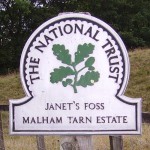Happy 10th Birthday to 100% Pure New Zealand
Hats off to Tourism New Zealand – their consistency has been rewarded.
Congratulations to Tourism New Zealand on their ‘100% Pure New Zealand campaign’.

100 Percent Pure NZ - 10 Years Old
OK – so it first launched 10 years ago but Tourism New Zealand has just been voted ‘best at destination branding’ during a survey of their peers by the United Nations World Tourism Organisation and European Travel Commission. ‘100% Pure New Zealand’ was the factor sited by their peers for the accolade.
I remember going to the launch at Vinopolis back in 1999 (showing my age…), a memorable event because Neil Finn of Crowded House played live, and I have to admit, I was a bit underwhelmed. It didn’t have the cleverness of the previous campaign – you remember, the one contrasting the stresses of London with the wavy green grass.
But sometimes us marketers are too clever for our own good and forget our target audience isn’t our peers.
“100% Pure New Zealand” is a simple but thoroughly researched and well thought through campaign that combines a clear brand strategy with great imagery and fantastic music. It gives a destination short on icons a clear, straightforward positioning, as relevant and appealing to audiences now as it was 10 years ago (and probably in 10 years time as well).
It struck me a while back that there’s much too much chopping and changing in the marketing profession. As each new Marketing Director comes in, they’re keen to make their mark and shake things up a bit – I’ve done it myself. New strategy, new campaign, new direction.
But people aren’t in the real world aren’t as intimately involved with our brand as we are. And neither do they get bored with something as quickly, because they’re not seeing it every day. A consistent message delivered over a long period – as long as its consistent with brand’s essence – builds recognition, credibility and trust.
For example, I have no idea how long that Jack Daniels campaign has been running on the Tube but I recognise it instantly and often wander down the platform to stand opposite one because despite the campaign’s longevity, they’re always entertaining. In fact, over the years I’ve probably become a minor expert on whisky maturation and I don’t even drink the stuff.
And look at what that long running Patek Philippe campaign has done for them – from niche brand to the one of world’s most desired watches.
So when you’re starting in a new role, think twice before you dispense with the old campaign. It will mark you out as a considered individual, prepared to put ego to one side.
And if you do decide to make a change, just bear in mind that when you dispense with the bathwater, the baby just might go out with it too.


